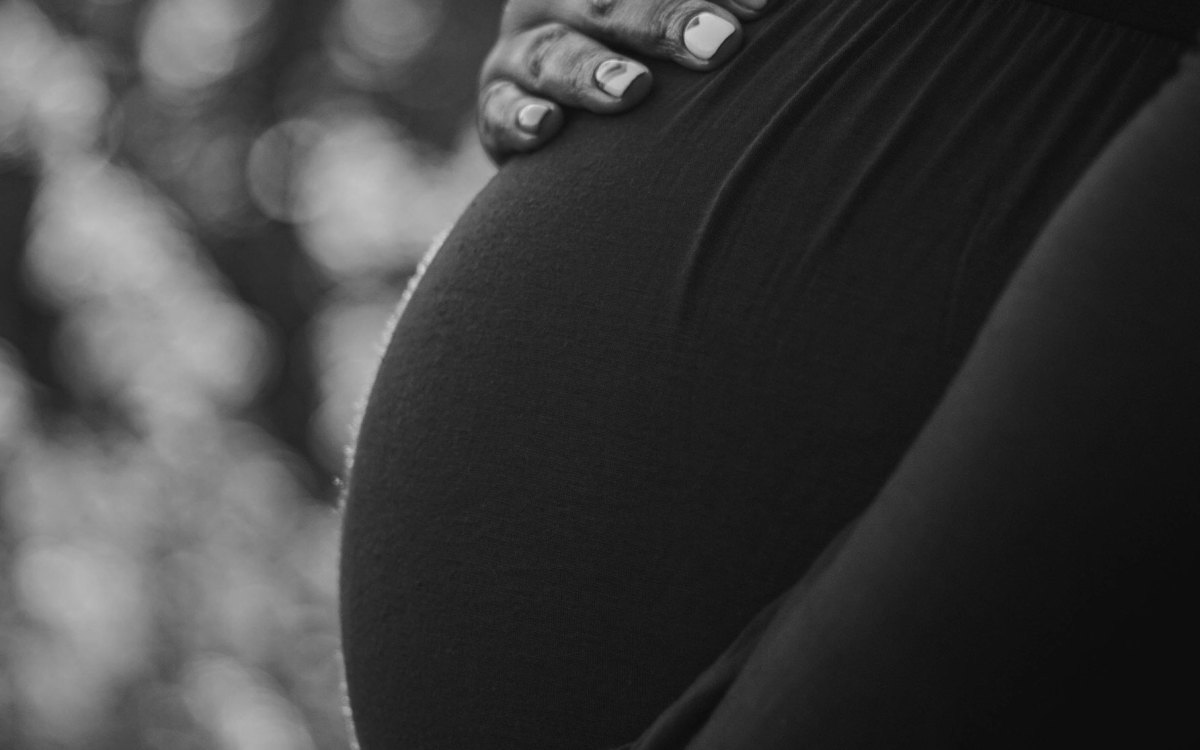
A new study examines disparities in COVID death rates among men and women by state and across time.
iStock
Why do more men die of COVID? It’s likely not what you think
GenderSci Lab finds social factors, not biological difference between sexes, play biggest role by far
Researchers agree that men die of COVID at a higher rate than women, but they haven’t been sure why. A new Harvard GenderSci Lab study of more than 30 million confirmed coronavirus cases in the U.S. suggests the reason has less to do with biological differences between the sexes and more with a series of social factors.
The analysis, summarized this week in Social Science and Medicine, showed that while men in the aggregate had higher mortality rates, these disparities varied widely by state and across time. Instead, the study team found the differences seem to have more to do with factors such as timing of surges, state health policies, gender-associated health behaviors, race, income level, and occupation.
“Overall, the findings show significant heterogeneity (or variation) in the sex disparity across states and over time,” said Sarah Richardson, founder and director of the GenderSci Lab. “The meaning of that is that sex differences in COVID-19 outcomes are not stable across location or consistent over time, suggesting that the causes of the sex disparity are sensitive to context and that no single factor offers a strong explanation.”
Using the Gender/Sex COVID Data Tracker the team created in 2020, the GenderSci Lab researchers found that in some states men were being infected and died at higher rates than women, while in other states the rates were about even. At certain times, women outpaced men in cases and fatalities.
In Texas, for example, men consistently had higher mortality rates across the pandemic, while in Connecticut women had higher mortality rates than men for 22 weeks. In New York, during the first six weeks of the pandemic men died at higher rates, but after that the rates evened out. Taken overall the results suggested that simply looking at the aggregate data for the nation would prove misleading.
The researchers also reported that U.S. death rates among men and women were separated by a smaller gap than thought. Early in the pandemic, scientists reported that men were dying of COVID-19 at rates as high as twice that of women. Since then, some researchers have continued to attribute higher COVID-19 death rates among men to factors related to biological sex, such as sex-specific hormones or the immune response.
“The idea here is to attend to the actual factors that are causing that greater vulnerability in men. If we had attended more to those factors, one might imagine that … men may have been better protected during the pandemic.”
Sarah Richardson, founder and director of the GenderSci Lab
The data from the tracker suggests males in the U.S. had a mortality rate 10 to 20 percent higher than that of females from April 2020 to May 2021, a ratio of about 1.14-to-1 instead of the 2-to-1 ratio frequently cited in media reports and in the scientific literature.
“Our study using U.S. data found an overall mortality rate that is slightly elevated for men, though much more moderate than is frequently claimed,” said Richardson, who is also a professor in the departments of History of Science and of Studies of Women, Gender, and Sexuality.
The study, which looked at 30 million cases, is the first longitudinal look that quantifies variation in COVID-19 cases and mortality by sex across states and over time. The findings were based on 55 weeks of publicly available data from April 2020 to the following May about COVID-19 case rates and mortalities across all U.S. states and two U.S. territories.
The data includes only those individuals designated as either male or female by the states. Researchers decided to exclude other possible gender categories owing to concerns about consistency of how states made determinations.
The tracker was created in August 2020 by the GenderSci Lab to look closely at how biology and social context affect health in people of all genders. It has been updated and maintained largely by a team of undergraduate researchers. There are now 85 weeks of data available on the tracker, and after data collection stops it will be kept open as a public resource tool.
“We hope that other researchers will take advantage of this wealth of data and cross-reference it with other sources of data that can help the research community further dig in deeper into what was really driving changes in the magnitude of sex disparities over time and in each individual state,” said lead author Ann Caroline Danielsen, a researcher at the GenderSci Lab.
In the report, the research team used statistical modeling to try to sort this out. They found that 30 percent of the variation comes down to state-level factors, which could include differences in public health policies, timing and length of mask mandates and business shutdowns, other social factors like gendered health behaviors, occupational exposures, pre-existing health conditions, and demographics including race, age, education, and ZIP codes.
The model also suggested that 10 percent of the difference is attributable to the point in time when a measurement was a taken, whether it was during the first waves or later ones. The remaining 60 percent of the variation is unexplained by either time or state.
The researchers believe their findings indicate that biological differences between the sexes alone can’t explain the variations in COVID-19 outcomes and that interventions centered on sex-related biological factors, like recommending the use of testosterone blockers or estrogen, likely won’t significantly change outcomes.
“Without considering [social and contextural] factors, you’re missing part of the picture of why people might be getting exposed or getting a more severe case,” said Tamara Rushovich, a graduate student at the T.H. Chan School of Public Health and part of the GenderSci Lab research team. “For example, when you see numbers that show different rates of cases or deaths, it’s not just biology, but what was your exposure risk? And that’s influenced by things like your occupation or your income.”
There are also factors like gendered behaviors, Rushovich added: “There’ve been studies that look at things like adherence to mask policies or social-distancing guidelines. They saw differences in gender adherence to those, so men being less likely to wear masks properly or to adhere to social distancing guidelines — that’s not due to biology.”
The researchers also pointed out in the paper that previous research has shown many of these types of social factors have led to persistently higher mortality rates for U.S. men even before COVID-19 pandemic.
“The idea here is to attend to the actual factors that are causing that greater vulnerability in men,” Richardson said. “If we had attended more to those factors, one might imagine that … men may have been better protected during the pandemic.”






